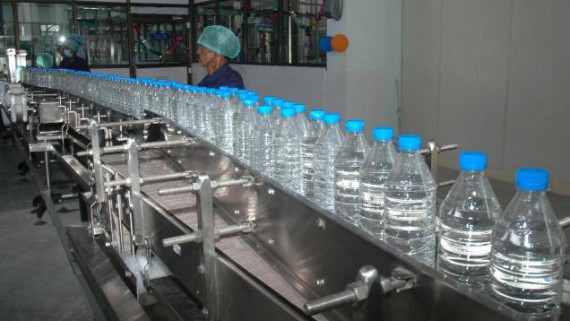The proposed Goods & Services Tax rates are retrograde for food products
The Goods and Services Tax (GST), which was envisaged for accelerating the economy through streamlining of taxation regime across the country, so far failed to get Parliament’s nod. The food industry which is a price- sensitive industry needs concessions, feels industry captains. So far, there is no clear picture on what kind of rates will be applicable for the industry. The minister concerned, however, tried to pacify the industry by acknowledging the need for rates on a lower side, still the food industry feels that if the subject of food is placed along with others, it would have negative consequences for the industry.
GST (Goods & Services Tax) is rapidly moving towards its point of culmination. The latest proposals made by senior functionaries of the government, including the chief economic advisor & head of GST panel Arvind Subramanian, reflect that GST rates are likely to be finalised in the range of 16% – 20% i.e. Central GST @ 8% – 10% and state GST @ 8% – 10%. While these rates may be suitable for many fields, a thorough analysis reveals that these rates are extremely retrograde for ‘food products,’ as described below:
In the past two decades, through a well-studied and calibrated process, the Central levy i.e. Central Excise Duty on food products was placed at ‘Exempted,’ ‘Zero Rated,’ 2% levels (also 6% if Cenvat credit is to be availed), which is helping the field to stabilise through adverse & difficult circumstances. This rate structure was evolved after extensive and comprehensive deliberations owing to a large number of important & critical reasons. The nation is grappling with issues of exorbitant wastages of agri-produce, low levels of processing, uncertainties of climate, distress to farmers, high food prices and inflation. There is an urgent need for the food sector to contribute to Make in India, skill development and employment generation. Under these harsh circumstances, it is not at all justified to place food products at 8% – 10% Central GST. Neither this sector will be able to bear this burden. The system may go into a negative spiral causing serious crisis, further distressing the consumer and the farmer.
Impact on inflation
Food is a life sustaining input and taxes on food directly impact inflation thereby causing social discomfiture and unrest. It is evident that this sector deserves a sensitive treatment in the matter of taxation and cannot be clubbed with other sectors. It has been assessed that the family food basket consumes 40% – 60% of the earnings of a common citizen resulting in a major household burden. Moreover, food is perishable by nature, has a high risk profile, is critical to consumer needs and therefore, should not be targeted for revenue generation.
In view of the above strategic futures, it is strongly recommended that the present status of Central levy on food products (i.e. exempted, zero rated, 2%) should be continued in the GST regime under the terminology ‘Central GST.’
In a similar manner, realising the inherent sensitivities & limitations of the food sector, as explained above, the state levy under GST i.e. ‘state GST’ for food products should be kept at the same rate as was recommended for VAT by the ‘Empowered Committee of State Finance Minister.’ The rates recommended by the Empowered Committee were ‘Exempted,’ ‘Zero Rated,’ and ‘4% VAT’ levels.
Multilevel employment
It needs to be recognised that food sector has the highest multiplier effect in generating multilevel employment. There is an urgent need to provide impetus to this sector to harness its vast potential rather than seek revenue from food products. We have to adopt a ‘Food Sensitive Tax Policy’ in the GST framework. The GST rates being proposed by senior government officials at the moment appear to be highly regressive in the context of ‘Food Products.’
It is important to clarify here that the current rates of ‘Exempted’ or ‘Zero Rated’ food products do not pose any difficulty in the system. The government gets input taxes even if the final food product is ‘Exempted’ or ‘Zero Rated.’ There should be no worry in continuing the policy of Exempted or Zero Rated food products to the GST Scheme also.
It is strongly recommended that to save wastages, help farmers, generate employment, boost ‘Food Processing’ in the country, and for greater economic & strategic benefits, it is advisable to maintain low rates of ‘Central GST’ and ‘state GST’ for ‘food products’ in line with those of ‘Central Excise Duty’ and ‘ State VAT’ currently. The nation looks forward to a clear fiscal policy in this regard. This policy should cover all commonly used food products, including ‘Dairy Products’, ‘Fruit & Vegetable Products’. ‘Spices & Condiments,’ ‘Edible Oils & Fats,’ ‘Meat & Poultry Products,’ ‘Aquatic Food Products,’ ‘Grain & Cereal Products, ‘Sugar & Honey Products,’ ‘Tea & Coffee Products,’ ‘ Herbal & Plant Food Products,’ ‘ Namkeens & Savories,’ ‘Ready-to-eat-Foods,’ and ‘Traditional & Ethnic Foods.’ These food products are important constituents of the food basket and are not luxury or sin products. These food products merit ‘Exemption’ or ‘Zero Rating’ under GST.
It may be reiterated that the food sector has immense growth potential and there will be huge contribution to revenue by way of input duty. It will also enhance GDP significantly.
Integrated process
Food is an integrated process, each step involves some processing and at each step food is consumed in some form. An attempt to classify food products into various baskets for application of different tax levels will lead to uncontrollable ‘product-and-rate-litigations,’ dissipating valuable time & energy of the government and the industry.
Keeping food products at ‘Exemption’ or ‘Zero Rating’ will also promote innovation which lies at the root of the ‘Make in India’ programme. This GST rate structure for ‘food products’ will be one visionary policy which will go across the board to satisfy the entire nation and applauded forever.
Let us take the right step forward and ensure rapid growth of the food sector by placing ‘Food Products’ at ‘Exempted’ or ‘Zero Rated’ level under ‘Central GST’ and ‘state GST.’


